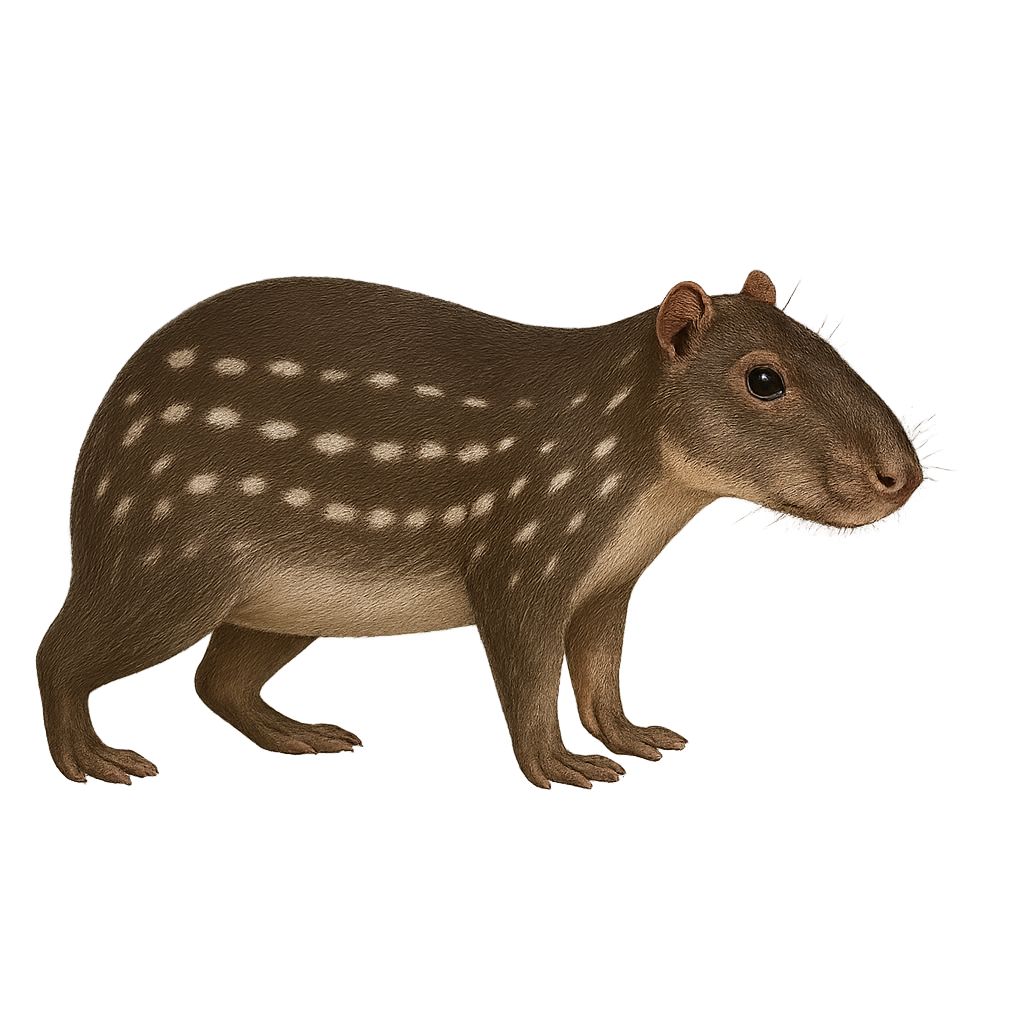Your wildlife photography guide.
Explore the lowland paca in detail, study its behavior, prepare your shots.
Where to observe and photograph the lowland paca in the wild
Learn where and when to spot the lowland paca in the wild, how to identify the species based on distinctive features, and what natural environments it inhabits. The WildlifePhotographer app offers tailored photography tips that reflect the lowland paca’s behavior, helping you capture better wildlife images. Explore the full species profile for key information including description, habitat, active periods, and approach techniques.
Lowland paca
Scientific name: Cuniculus paca

IUCN Status: Least Concern
Family: CUNICULIDAE
Group: Mammals
Sensitivity to human approach: Suspicious
Minimum approach distance: 10 m
Rut period: April to June
Gestation: 114-119 jours
Births: July to October
Habitat:
tropical forests, rainforests, riverbanks
Activity period :
Mainly active at night, generally discreet during the day.
Identification and description:
The lowland paca, or Cuniculus paca, is a medium-sized rodent native to the tropical forests of Central and South America. It is easily identifiable by its brown fur with distinct white spots on its sides. Pacas are nocturnal animals that spend the day in burrows dug near water bodies. They are herbivores, primarily feeding on fruits, seeds, and leaves. Their behavior is generally suspicious, making them difficult to observe in the wild. Pacas play a crucial role in seed dispersal, aiding forest regeneration. Their population is stable, although they are sometimes hunted for their meat.
Recommended lens:
400 mm – adjust based on distance, desired framing (portrait or habitat), and approach conditions.
Photography tips:
To photograph the paca, it is advisable to use a telephoto lens of 400mm or more, as these animals are often suspicious and difficult to approach. Look for areas near water, as pacas prefer humid habitats. Be patient and discreet, as they are primarily active at night. Use a tripod to stabilize your camera in low light conditions. Avoid sudden movements and maintain a distance of at least 10 meters to avoid scaring them away.
The WildlifePhotographer App is coming soon!
Be the first to explore the best nature spots, track rutting seasons, log your observations, and observe more wildlife.
Already 1 430 wildlife lovers subscribed worldwide

